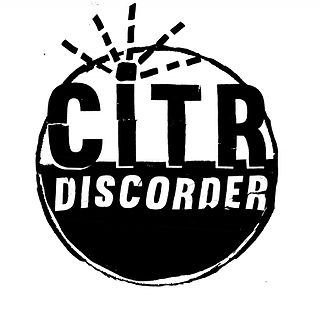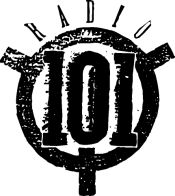Satellite radio is defined by the International Telecommunication Union (ITU)'s ITU Radio Regulations (RR) as a broadcasting-satellite service. The satellite's signals are broadcast nationwide, across a much wider geographical area than terrestrial radio stations, and the service is primarily intended for the occupants of motor vehicles. It is available by subscription, mostly commercial free, and offers subscribers more stations and a wider variety of programming options than terrestrial radio.

Community radio is a radio service offering a third model of radio broadcasting in addition to commercial and public broadcasting. Community stations serve geographic communities and communities of interest. They broadcast content that is popular and relevant to a local, specific audience but is often overlooked by commercial (or) mass-media broadcasters. Community radio stations are operated, owned, and influenced by the communities they serve. They are generally nonprofit and provide a mechanism for enabling individuals, groups, and communities to tell their own stories, to share experiences and, in a media-rich world, to become creators and contributors of media.
AM stereo is a term given to a series of mutually incompatible techniques for radio broadcasting stereo audio in the AM band in a manner that is compatible with standard AM receivers. There are two main classes of systems: independent sideband (ISB) systems, promoted principally by American broadcast engineer Leonard R. Kahn; and quadrature amplitude modulation (QAM) multiplexing systems.

Hrvatska radiotelevizija, or Croatian Radiotelevision, is Croatia's public broadcasting company. It operates several radio and television channels, over a domestic transmitter network as well as satellite. HRT is divided into three joint companies – Croatian Radio, Croatian Television and Music Production, which includes three orchestras and a choir.

This is the history of Croatia since the end of the Croatian War of Independence.

The mass media in South Africa has a large mass media sector and is one of Africa's major media centres. While South Africa's many broadcasters and publications reflect the diversity of the population as a whole, the most commonly used language is English. However, all ten other official languages are represented to some extent or another. Afrikaans is the second most commonly used language, especially in the publishing sector.

Marko Perković is a Croatian musician who has been the lead singer of the band Thompson since 1991.

CiTR-FM is a Canadian FM radio station based in the University of British Columbia's Student Union Building in the University Endowment Lands, just west of the city limits of Vancouver, British Columbia. Its transmitter is also located on campus.
The Zagreb crisis is the political crisis that followed the elections for the City of Zagreb local assembly held in October 1995. During the crisis the winning parties were unable to appoint their candidate for the Mayor of Zagreb because President of Croatia Franjo Tuđman refused to provide the formal confirmation of their decision.
WNYZ-LD is a low-power television station in New York City, owned by K Media. It broadcasts on VHF channel 6, commonly known as an "FM6 operation" because the audio portion of the signal lies at 87.75 MHz, receivable by analog FM radios, tuned to the 87.75 frequency. Throughout its existence, the station has operated closer to a radio station than a television station. WNYZ-LD broadcasts video, usually silent films, which are repeated throughout the day to fulfill the Federal Communications Commission (FCC) requirement that video be broadcast on the licensed frequency. The station airs this programming without commercials, while viewers hear the audio of WWRU out of Jersey City, New Jersey.
WRVU is a student-run college radio station associated with, but not operated by, Vanderbilt University in Nashville, Tennessee. It broadcasts via streaming radio, and from 1973 to 2014, it was also broadcast on licensed radio stations in Nashville. The station is operated as a division of Vanderbilt Student Communications (VSC), an independent non-profit affiliated with the university to oversee student media.VSC is subsidized by a student activity fee, charged to each Vanderbilt student's tuition bill every semester.

The mass media in Indonesia consist of several different types of communications media: television, radio, cinema, newspapers, magazines, and Internet-based websites.

Radio Television of Kosovo (RTK; Albanian: Radio Televizioni i Kosovës is the public service broadcaster in Kosovo. RTK operates two radio services broadcasting a diverse programming of news and entertainment and four 24-hour television services broadcasting on terrestrial and satellite networks.
KSTB was a radio station broadcasting a country music format. Licensed to serve the community of Crystal Beach, Texas, United States, it served the Houston area during its time on the air. The station was owned and operated by Cumulus Media.

The mass media in Croatia refers to mass media outlets based in Croatia. Television, magazines, and newspapers are all operated by both state-owned and for-profit corporations which depend on advertising, subscription, and other sales-related revenues. The Constitution of Croatia guarantees freedom of speech and Croatia ranked 63rd in the 2016 Press Freedom Index report compiled by Reporters Without Borders, falling by 5 places if compared to the 2015 Index.

Vatroslav Lisinski Concert Hall is a large concert hall and convention center in Zagreb, Croatia. It is named after Vatroslav Lisinski, a 19th-century Croatian composer. The building has a big hall with 1,841 seats and a small hall with 305 seats. A large lobby doubles as an exhibition area.
Television in Croatia was first introduced in 1956. As of 2012, there are 10 nationwide and 21 regional DVB-T television channels, and there are more than 30 other channels either produced in the Republic of Croatia or produced for the Croatian market and broadcast via IPTV, cable, or satellite television. The electronic communications market in Croatia is regulated by the Croatian Regulatory Authority for Network Industries (HAKOM), which issues broadcast licenses and monitors the market. The DVB-T and satellite transmission infrastructure is developed and maintained by the state-owned company Odašiljači i veze (OiV).

Satellite Digital Audio Broadcast Co., Ltd., trading as St.GIGA, was a Japanese satellite radio company headquartered in Akasaka, Tokyo. The company was established on April 2, 1990 as a subsidiary of the television station provider WOWOW, achieving a cult following through its "Tide of Sound" nature sounds recording broadcasts and its nonstandard methodology. By 1994, St.GIGA was struggling financially due to Japan's economic stagnation affecting the demand for its ambient music, as consumers became reluctant to invest in satellite tuners.
Television in Bosnia and Herzegovina was first introduced in 1961. Out of 94 TV stations, 71 are commercial, 20 are public, while 3 public services are funded through subscription.
Croatian Radio is the official broadcasting service of Croatia. Founded on May 15, 1926 as Zagreb Radio, it's the first radio station in all of Southeast Europe. Part of Croatian Radiotelevision, it operates three national stations, several regional branches and an international service.












